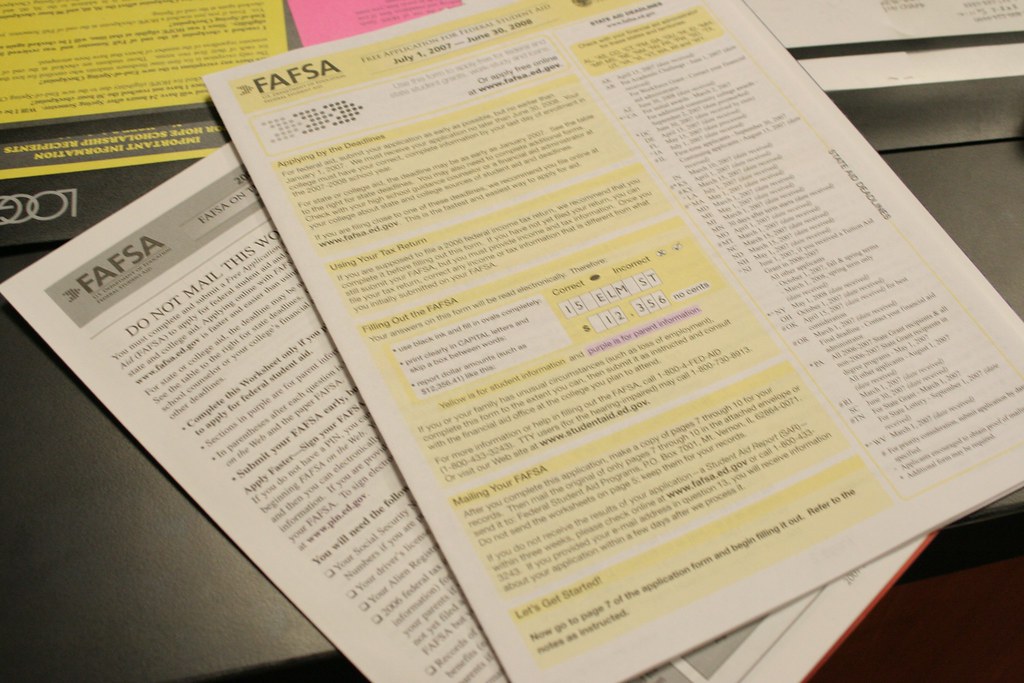The Trump administration has assigned itself the mission of ruining education in the United States. From attacks on DEI to attaching themselves to conservative education activists, a blatantly obvious result of the Trump administration will be to make education inaccessible for anyone who is not wealthy and white. A prime example is financial aid. The administration hasn’t yet stated where Federal Student Aid (FSA) and the application system it administers, Free Application for Student Aid (FAFSA), would be placed if Trump succeeds in his entirely misguided assault on the Department of Education. FAFSA is the standardized form that students fill out every year to receive federal assistance in paying for college, grad school, med school, law school etc. FSA, by way of the FAFSA, now services an estimated 17 million students per year. FAFSA ensures millions of students across the country can obtain an education and pursue a career of their choice. Without it, how can students who do not come from privilege pay some exorbitant amount of money in tuition?
Reportedly, President Trump is considering moving the agency (and thus the system) to the Department of Commerce, run by Howard Lutnick. Small Business Administration Chief Kelly Loeffler, best known for her insider trader scandal, wants to move the program to her agency. This would more than quadruple the SBA’s loan portfolio after Elon Musk’s Department of Government Efficiency (DOGE) has already cut “a few hundred” of SBA’s probationary staff.
Both Commerce and SBA disburse loans. SBA actually offers a myriad of different loans, even some specific to women. The problem is that with the massive reduction in the federal workforce, how can Loeffler and her skeleton staff manage to serve the needs of approximately 17 million students per year? Loeffler has only suggested moving FAFSA, not FSA (meaning the trained administrative staff) to SBA.
While the agency has grown over the years from serving just under 48,000 loans in 2022 to over 70,000 in 2024, especially after the cuts from DOGE, it does not have the dedicated workforce to service the needs of students in the way FSA can. SBA’s peak in 2024, prior to being kneecapped by Musk, was approximately 70,242 loans. That is nowhere near the average of 17 million students that FSA is used to aiding. Especially given the 2024 FAFSA mishap in which Education’s (well intentioned) attempts to streamline the application for students led to issues of communication between both students and the agency, and even an inability to process applications. It does not help that the Education Department already contracts out to lenders like Nelnet who already are keeping people in debt for longer than they should be. Students will be waiting for their federal dollars and graduates will be forever saddled with debt.
For its part, Commerce (whose IT system similarly was hit with Elon Musk’s DOGE sledgehammer) offers flexible loans for mortgages and cars, but again, the type of loan servicing is entirely different for student borrowers. Commerce also has some issues with technology and modernization (include identity authentication and even its financial systems), which in the entirely digital landscape that is FAFSA would probably impact students in a way that would inhibit their ability to successfully complete their applications
A third and no more viable option for students is turning FSA into a government-owned enterprise. Rather than scrapping FSA, Project 2025 proposed spinning it off into a “new government corporation with professional governance and management.” A government corporation is a company created by Congress to achieve specific policy goals. This would turn FSA into something akin to Amtrak.
Now, Musk would make the argument that these loan serving agencies indicate why the federal workforce should be replaced with AI. Experts say this would be a terrible idea that would lead to chaos. CEO of the Work3 Institute, an AI advisory firm, Deborah Perry Piscione points out that while AI can streamline some paperwork, it just can’t replace civil servants. Piscione gave the example of an AI chatbot that does not understand the unique elements of a veteran applying for benefits. Imagine AI trying to help students complete their financial aid.
The Education Department already utilizes AI to answer rudimentary questions in their call centers. Last September, during the rollout of the new FAFSA, three-quarters of the calls were left unanswered. AI in its current form simply does not have the processing power to service the 17 million students who need aid.
A study from the U.S. Merit Systems Protection board MSPB) found that downsizing agencies ultimately undermined the mission they were supposed to accomplish. ED has the smallest federal workforces of the cabinet agencies, so rolling it into other agencies already saddled with existing duties would exacerbate these problems. Increasing the federal workforce, and curtailing the reliance on AI, probably would have ensured that three-quarters of phone calls would not have been missed.
The Trump Administration seemingly does not believe a quality education is a right. Trump and his lackeys putting the Department of Education in limbo is probably part of the plan to eviscerate any sense of a national commitment to higher education for all. Leaving FAFSA in limbo will have a material impact on students. Just last year, almost 18 million students filled out this form, a slight uptick from the average of 17 million. The groups that are most likely to receive aid are Black students, women, and dependents (most likely to be minors).
A little history lesson for you: FSA was established under President Johnson through the Higher Education Act to ensure students could pay for college. Students would fill out the Common Financial Aid Form, which was later replaced by the FAFSA in 1992 during the HEA’s reauthorization. Even in the 1960s, Washington politicians knew that college was inaccessible to anyone who was not well off. The Trump Administration’s decision to dismantle ED, and put millions of students at risk will have dire consequences that will ripple across decades.

